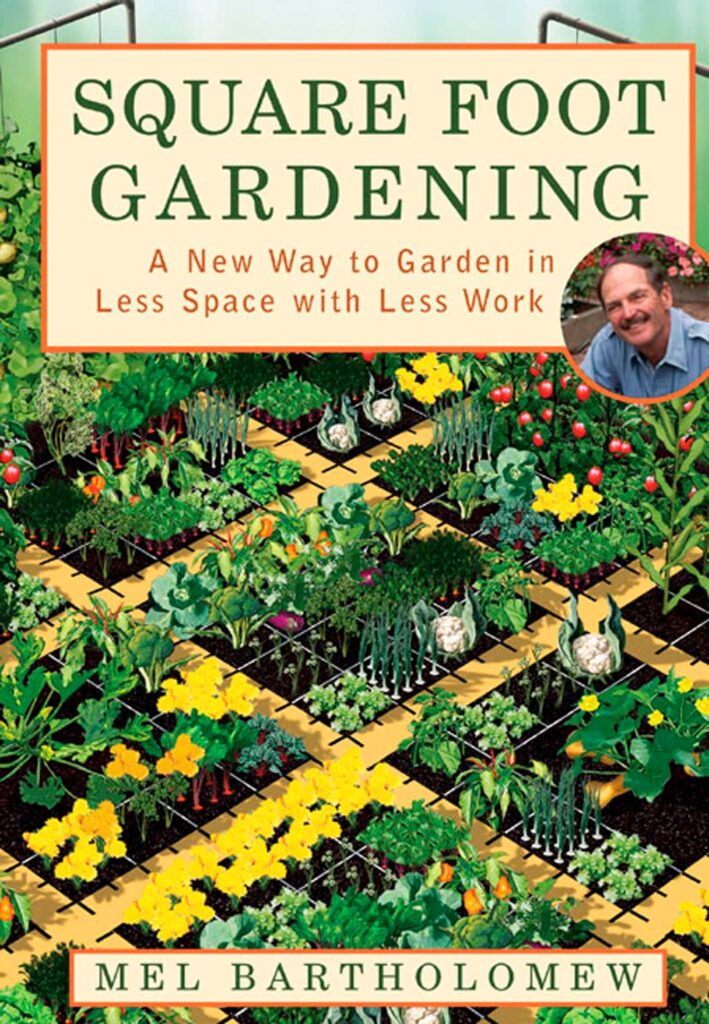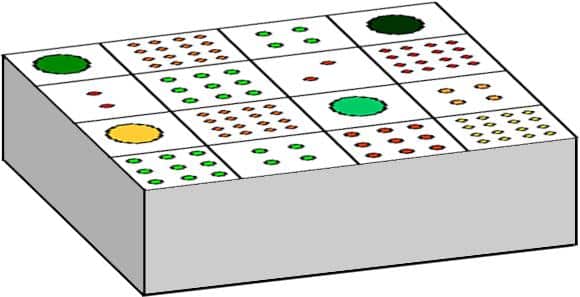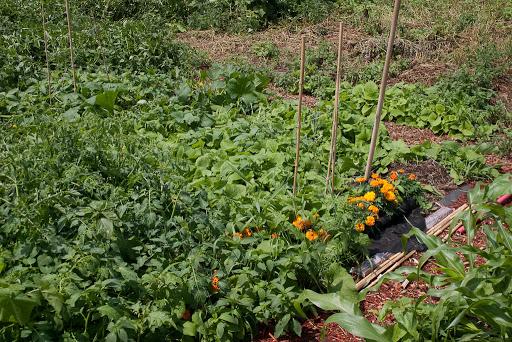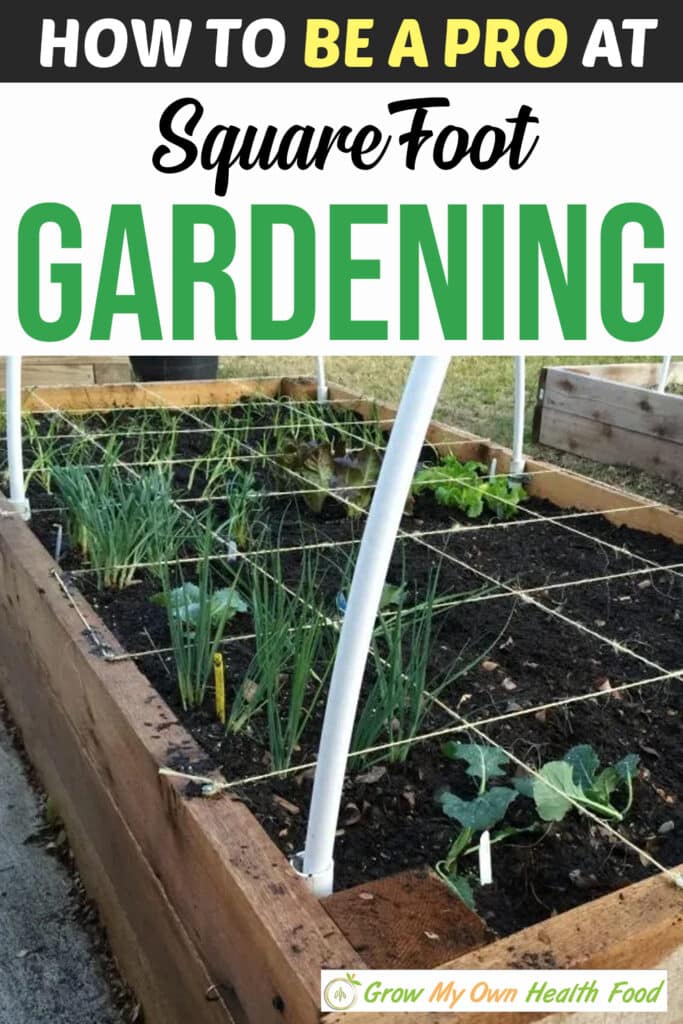Square foot gardening has been a hit for decades, especially among urban gardeners. It’s an efficient gardening technique that helps you use even the tiniest piece of land productively. So if you have several vegetable crops on your mind but limited space to work it out, square foot gardening is the answer. Once you get working on it, you’ll be amazed at what you can get out of only a few square feet of land, which you thought wasn’t good for much.
So what’s it all about? What is square foot gardening, how does it benefit you, and how can you implement it effectively. This post will tell you everything you need to know to become a pro square foot gardener.
Meet The Pioneer – Mel Bartholomew

Square foot gardening is a technique developed by a retired civil engineer and a hobby gardener, Mel Bartholomew, in his book Square Foot Gardening in 1981. It quickly grabbed attention and also generated a PBS Television Series soon after the book’s release.
As an engineer, Bartholomew combined his planning and design skills with mastery in gardening and came up with a practical solution to grow more food in limited space. The first edition of his book secured millions of sales on Amazon, followed by a 2nd and a 3rd edition, which were just as successful.
What Is Square Foot Gardening?
So what exactly is Mel Bartholomew’s square food garden? It’s a simple system, but genius in every aspect. The system is based on a 4 by 4 feet raised bed divided into 16 identical squares, 1 foot each. Each square is then planted with a different crop. You can also use more than one squares to plant a single crop.
Bartholomew used a unique soil mix to fill the squares, mixing equal parts of peat, vermiculite, and compost. He planted a combination of vegetables, flowers, and herbs in his 4-foot square raised bed, but you can pick the plants to suit your preferences and requirements.
What Benefits Does The Square Foot Garden Offer?
Before diving into the technique, wouldn’t you want to know the potential it holds? Would it really be a good approach to use in your garden?
Here are some reasons why square foot gardening is your ultimate partner, especially if you’re growing edibles:
- Improved yields: You can expect the same yields from a compact space as you would with row-planted vegetables.
- Simple setup: It’s a quick and easy way to set up a garden, especially for beginners. You can conveniently place the raised bed anywhere you find the place – even on grass!
- No weeding: With the recommended soil mix, weeds won’t bother your plants. Unlike traditional gardening, you won’t find yourself weeding all through the growing season.
- Easier maintenance: Since it’s a small garden, maintenance and harvesting will be much easier and faster than with conventional gardens.
- Easier access: The compact square garden is easy to access from all sides. Elderly gardeners can even place it over a plywood table to raise it to a convenient height.
What To Plant In A Square Foot Garden?
Though most vegetables work out great for the technique, here’s a list of the best ones. Against the no. of plants per square foot, we have including the varieties that work ideally for that spacing.
Square Foot Gardening Planner

| No. of plants per square foot | Vegetables |
| 1 | Eggplant, pepper, tomato, oregano, corn, cabbage, Brussel sprout, broccoli, cauliflower, collard |
| 2 | Basil, cucumber, head lettuce, sorrel, radicchio |
| 4 | Leaf lettuce, chard, shallots, parsley, arugula, Asian greens, potatoes |
| 6 | Pole beans, pole peas |
| 9 | Bush beans, bush peas, onions, spinach, garlic, beets |
| 16 | Carrots, radishes |
You can also grow larger plants in your square foot garden, like melons, cantaloupe, and watermelon, but they’ll need two squares to grow for a single plant.
What Is Companion Planting?
A significant part of practical square foot gardening is companion planting. Since you’ll be growing vegetables next to each other, you should know the vegetables that get along well. Not all vegetables work well when planted close to each other.
Some vegetables keep out the pests or make nutrients available for other crops or attract pollinators, creating a harmonious environment for the combination to grow. On the other side, if two crops compete for the same nutrients or attract pests for the other crops, that won’t make the right combination.
When deciding which plants to grow in which plots on your raised bed, do some research to find good companions. Good companions will work great as neighbors in the square foot plots, while bad companions should never be planted as neighbors.
Pro Guide To Square Foot Gardening Planning

Square foot gardening’s success is based on a few set of rules. As long as you follow these, your square raised garden is bound to bring you bundles of fresh harvests each season.
Here’s what you do:
- Prepare The Raised Bed
You can either build or purchase a 4 by 4 foot raised bed. The bed should be between 6 to 12 inches deep, so the plants have plenty of space to expand their roots and access the soil’s nutrients. You can use reclaimed wood, concrete blocks, stones, or bricks to build one. Line it with a weed barrier landscaping fabric, especially if you’re going to place the bed over grass or ground.
- Soil Mix
Time to fill the bed with the perfect soil mix. You can choose to use “Mel’s Mix” exactly, with equal amounts of peat, vermiculite, and compost, or use a blend of your preference. Packaged potting mix is also a great choice, but avoid using garden soil since it creates drainage problems and imports weeds into your square foot garden.
- Mark The Squares
Next, lay a square foot grid over it to mark the squares for planting. The grid doesn’t need to penetrate the soil; it’s only there on top of the bed so you can find your grow spaces. You can use bamboo canes, reclaimed plumbing pipes, or even strings to make the grid.
- Plant The Seeds
Your square foot garden is ready for some seed sowing! Depending on the climate you live in, you can either start the seeds indoors and transfer seedlings to the square food garden once the weather is warmer or plant directly in the raised bed. Plant the seeds at the suitable spacing as described in the table above. Don’t forget to consider companion planting before deciding what to plant where.
- Maintain
One of the most admirable things about square foot gardening is that maintenance is easy. Watering it just right is the key. The goal is to keep the soil moist – not damp, not dry. Overwatering or underwatering can destroy your young plants.
If you’ve already used a compost-rich mix to fill the bed, the plants are already getting the nutrients they need. You won’t need to feed the plants – remember that an excess of nutrients can also create problems. Once you’ve harvested the crop, you can replenish it with compost or fertilizers, so the next batch of crops also have an adequate supply of nutrients.
Tips to Ensure A Thriving Container Garden

You already know the basics. Here are some pro tips for a productive square foot garden:
- Consider Plant Height
When planting the garden, consider the height of fully grown plants. The taller ones should be planted towards the northern side of the bed, so they don’t block the light for the shorter heat-loving plants.
- Start Small
Square foot gardening can be pretty exciting, but don’t go overboard right from the start. If it’s your first time, starting small is a good idea. A 4 by 4, or even a 2 by 2 bed size is a good start. The preparation of a smaller bed will cost you less and it will be much easier to maintain.
- Crop Rotation
Rotate the crops when planting in the next season. Don’t plant the same variety in the same plot as you did for the previous growing season.
- Consider Depth Of The Bed
If you’re planning to grow root vegetables, make sure that the depth of your raised bed is at least 12 inches, though 18 inches is even better.
- Border With Living Pest Repellents
Alliums, including garlic, onions, and shallots, deter pests with their strong, pungent smell. Plant these varieties on the bordering squares to keep insects and pests away from your garden.
Container Garden Conclusion
There you have it – everything you’ll need to get your square foot garden going. Gather the supplies and get growing! Once you have it all set up nicely in your backyard, porch, or patio, you’ll just need to water and wait; before you know it, your square foot garden will be growing beautiful, delicious vegetables for the family to enjoy.







